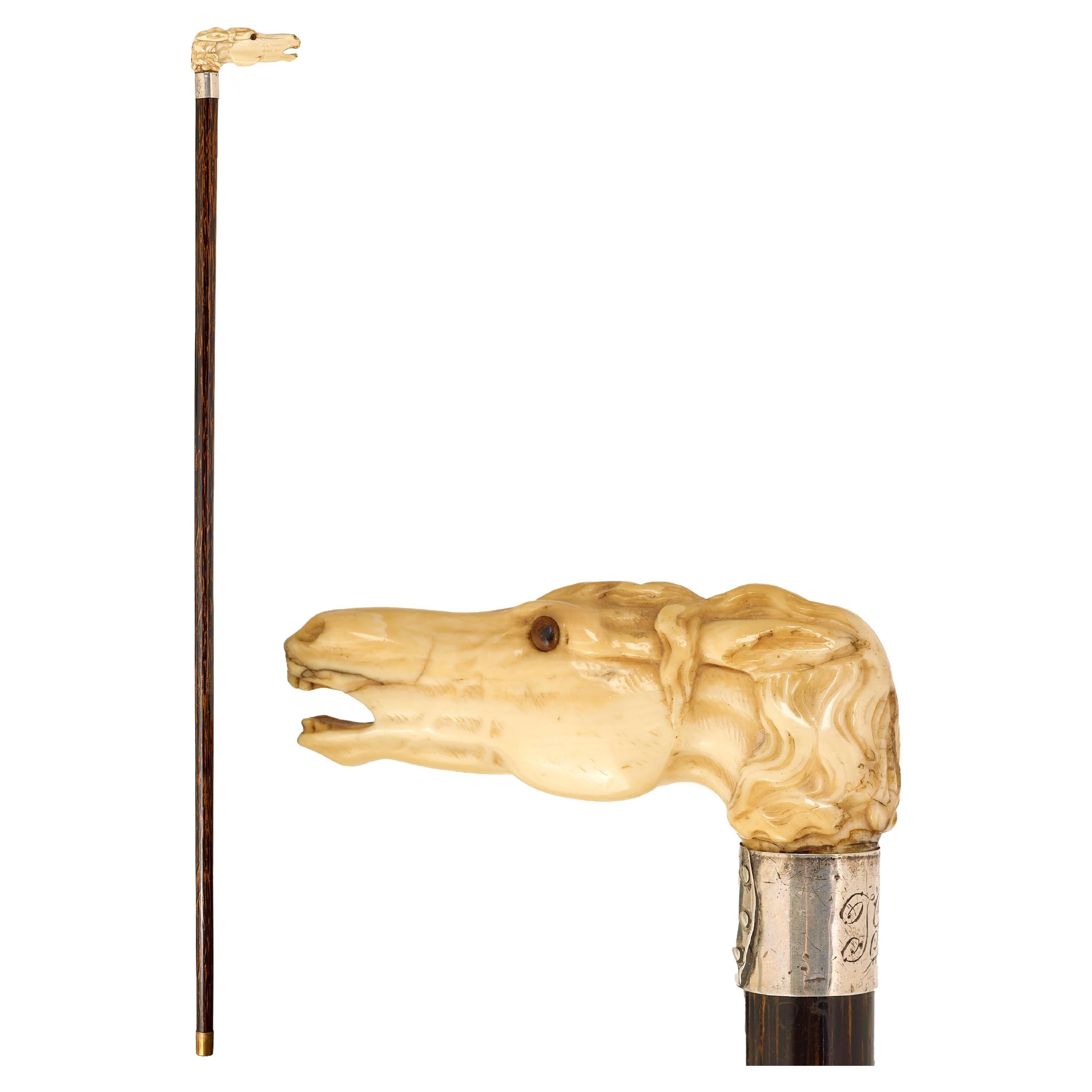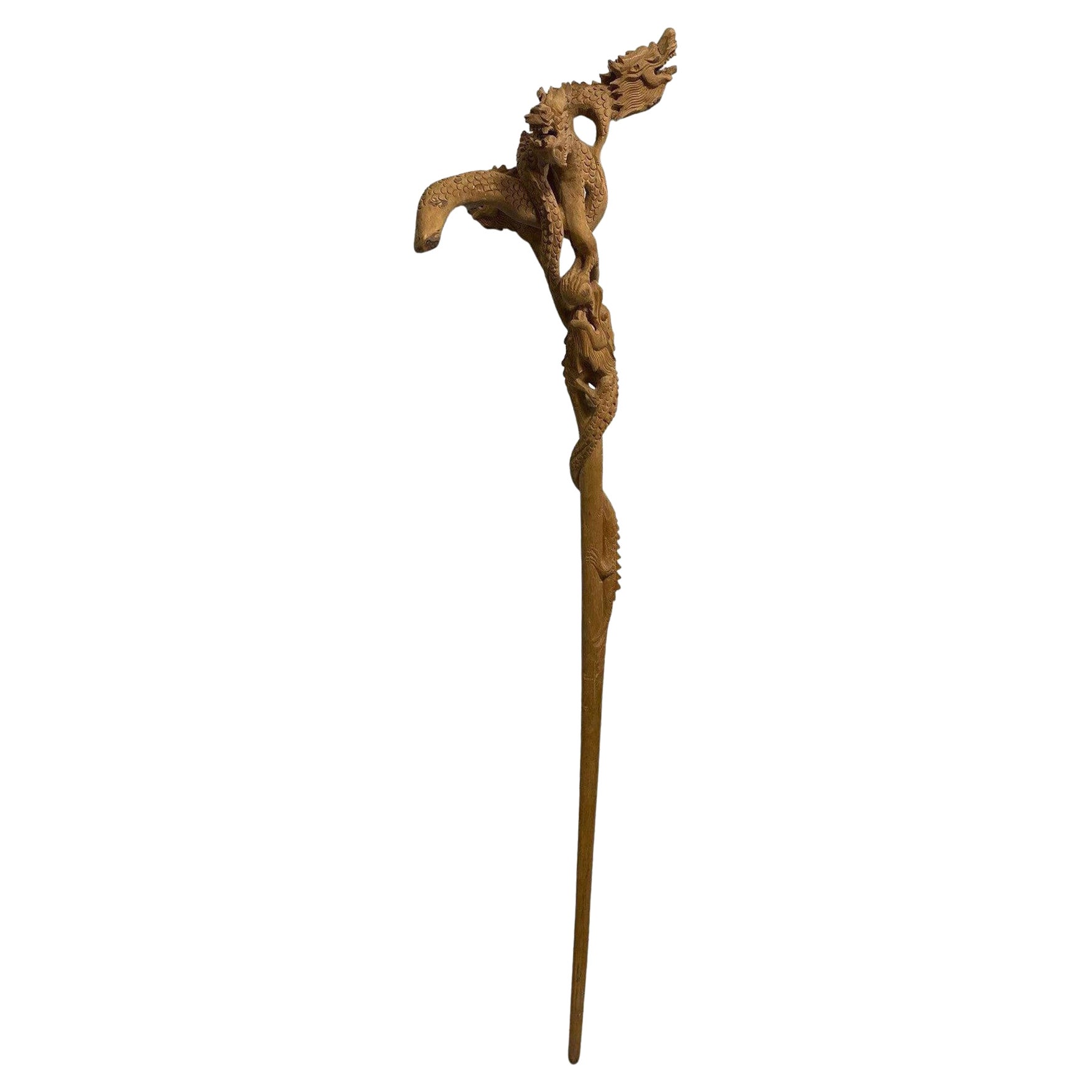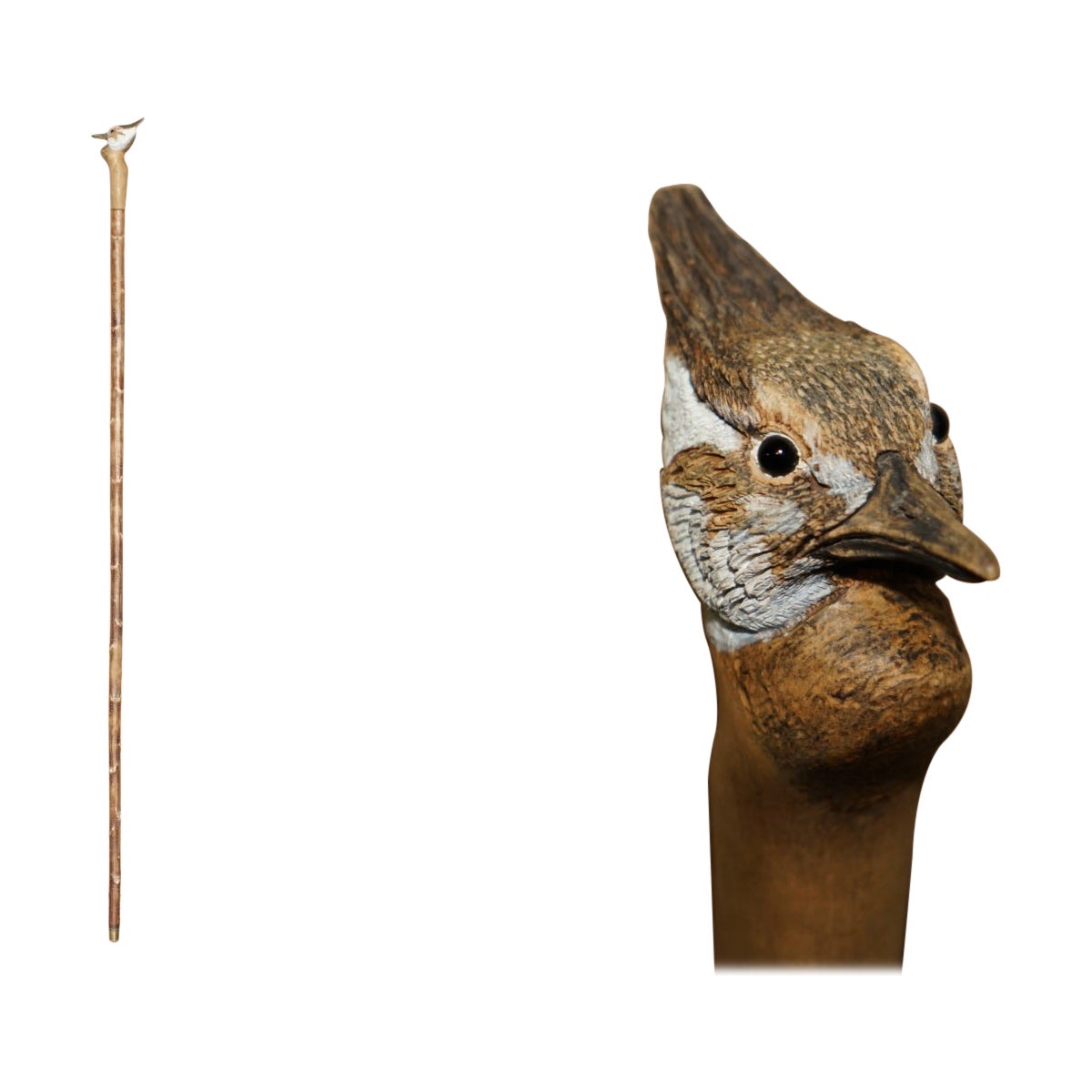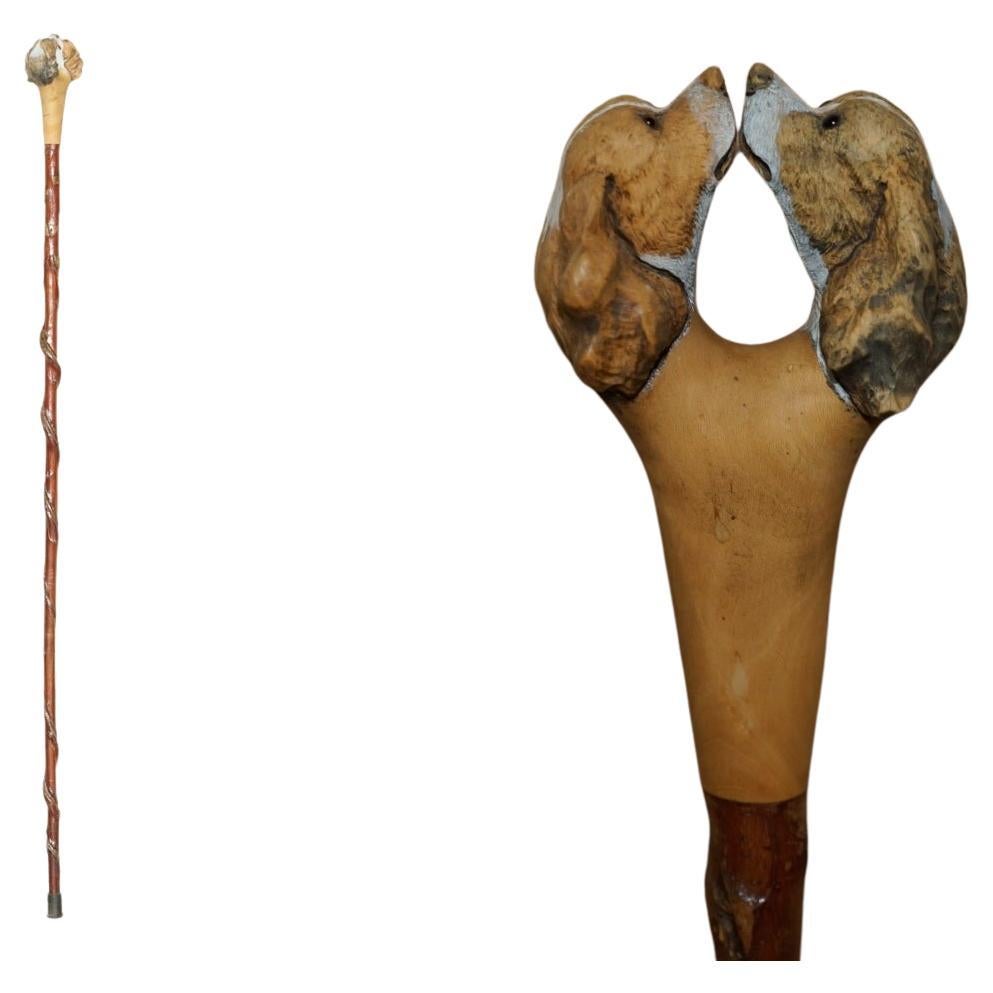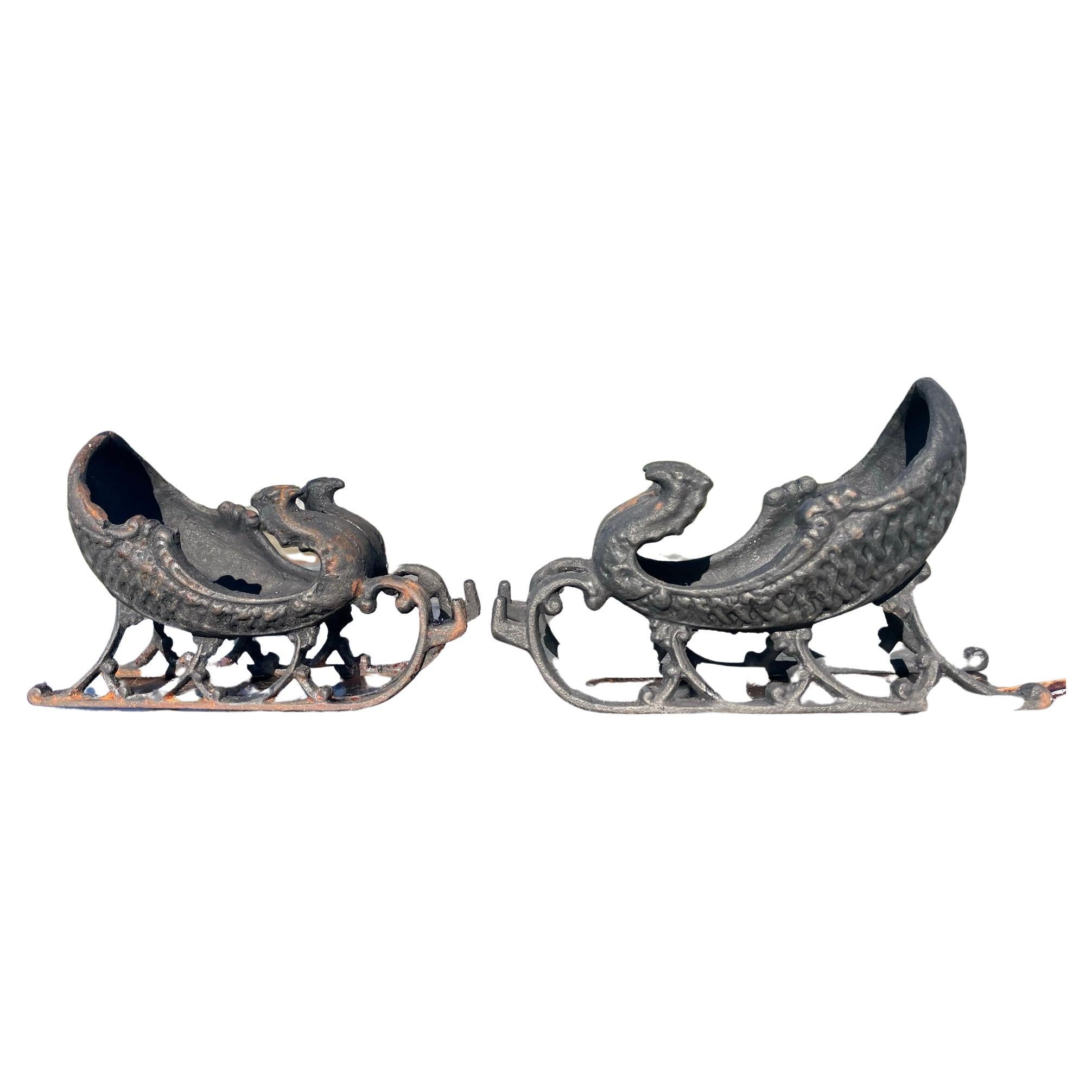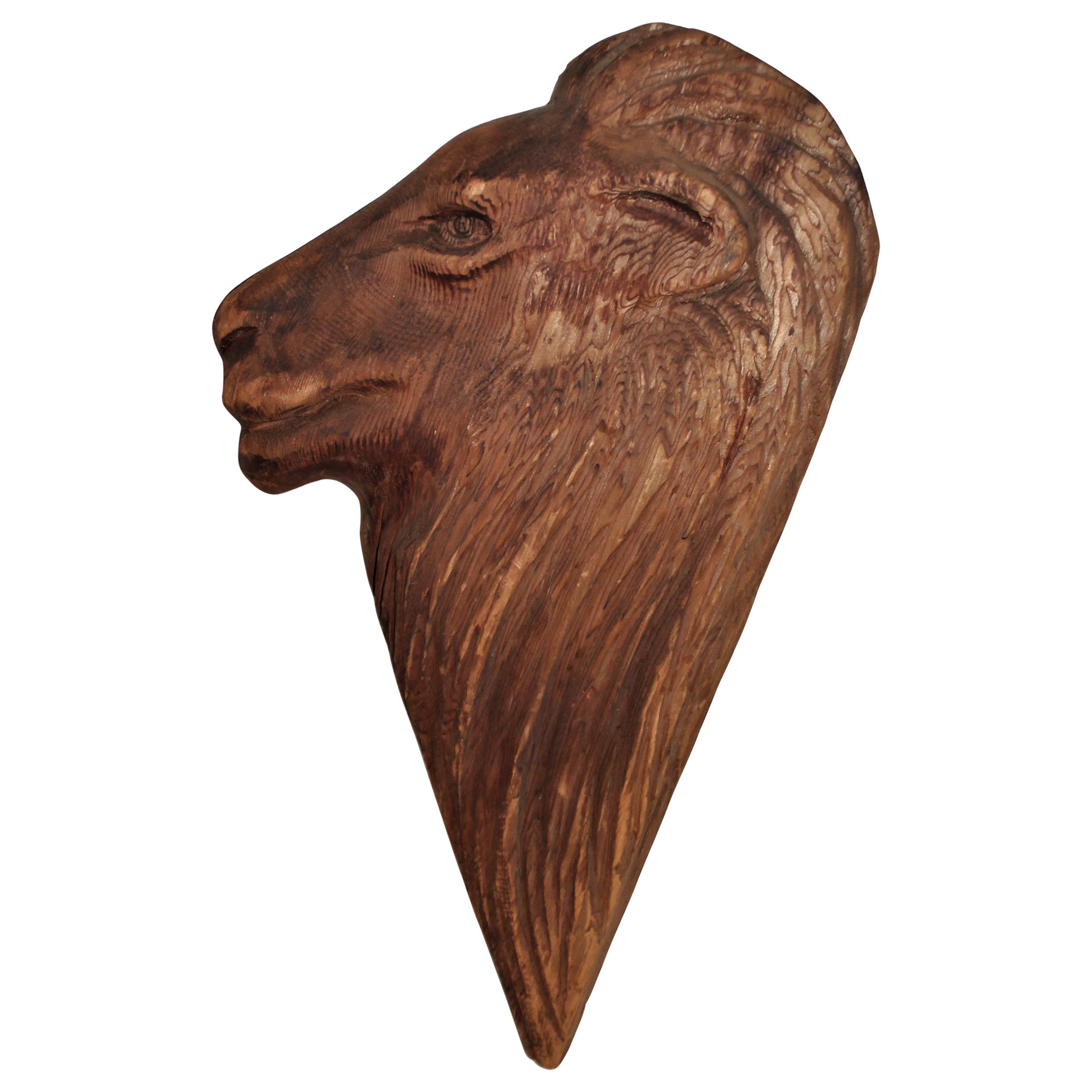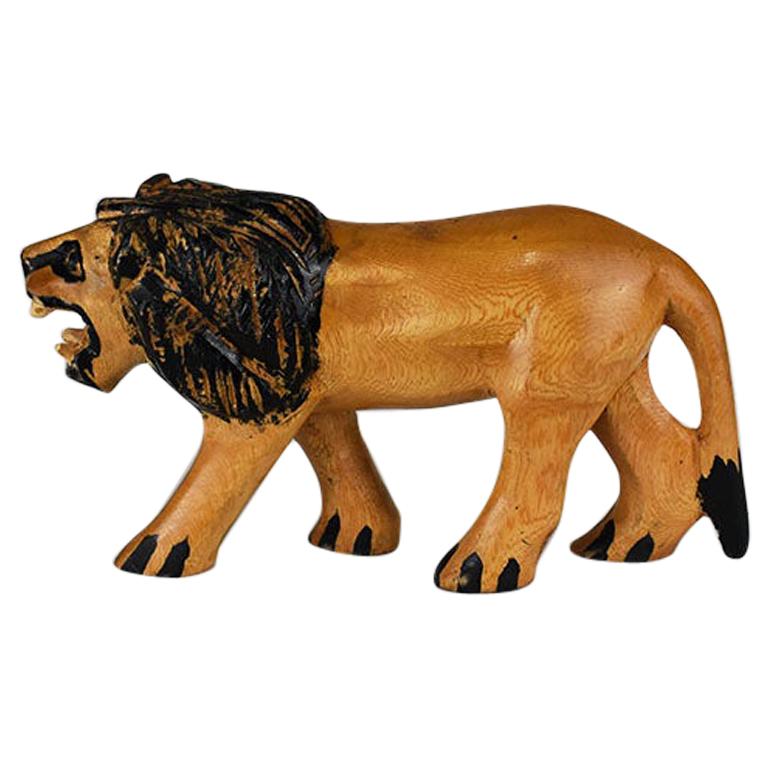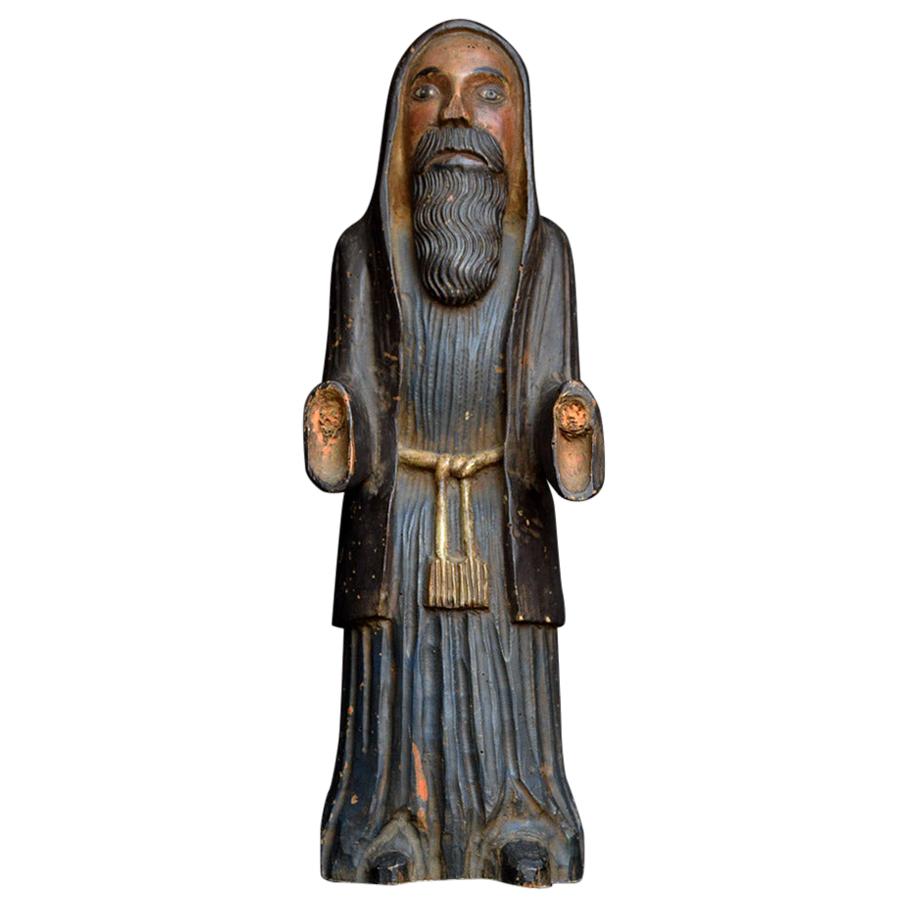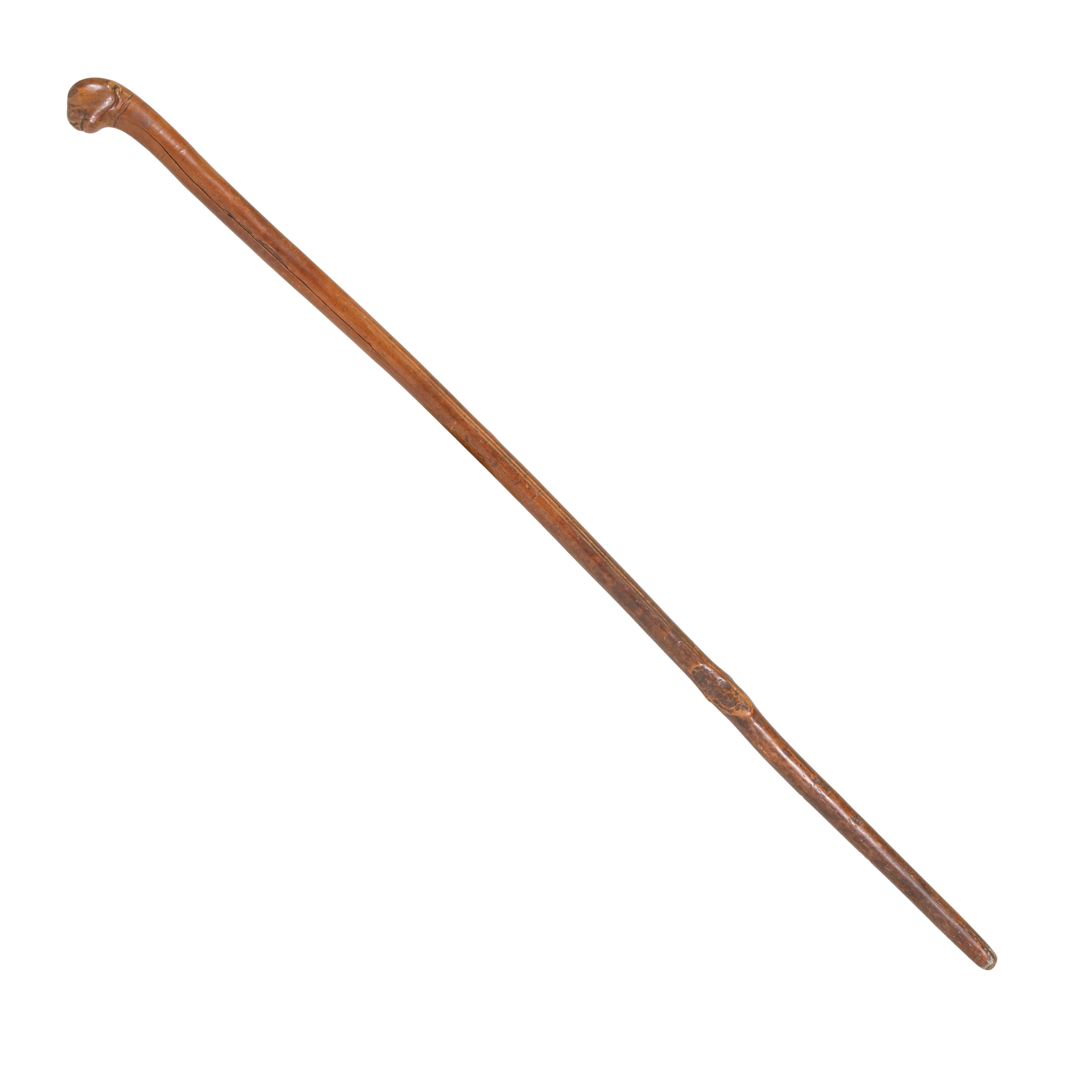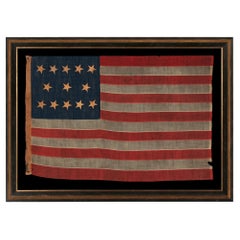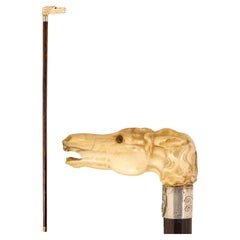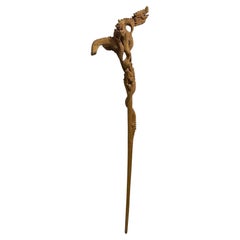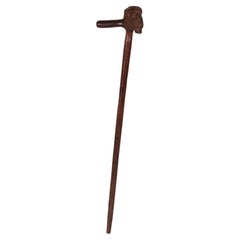
Rosewood Cane with Hand-Carved Buffalo Head, Ca 1940
View Similar Items
Want more images or videos?
Request additional images or videos from the seller
1 of 6
Rosewood Cane with Hand-Carved Buffalo Head, Ca 1940
About the Item
- Dimensions:Height: 38.5 in (97.79 cm)Width: 7.5 in (19.05 cm)Depth: 2.75 in (6.99 cm)
- Materials and Techniques:
- Place of Origin:
- Period:
- Date of Manufacture:1940
- Condition:See Item Description.
- Seller Location:York County, PA
- Reference Number:Seller: fcs-2101stDibs: LU849730650102
About the Seller
5.0
Recognized Seller
These prestigious sellers are industry leaders and represent the highest echelon for item quality and design.
Established in 1991
1stDibs seller since 2008
61 sales on 1stDibs
Typical response time: 10 hours
More From This SellerView All
- Pressed Brass Eagle, Parade Flag Holder and Bunting Tie Back, ca 1880-1895Located in York County, PAPressed brass eagle, an early parade flag holder & bunting tie-back, an especially attractive example, circa 1880-1895 Pressed brass eagles decorated the interiors of Civil War ve...Category
Antique Late 19th Century American Political and Patriotic Memorabilia
MaterialsBrass
- 13 Star Antique American Flag with Hand-Sewn Stars in 5-3-5 Pattern, ca 1861-65Located in York County, PAAntique American flag with 13 hand-sewn stars in an extremely rare lineal configuration of 5-3-5, probably made with the intent of use by local militia or private outfitting of a vol...Category
Antique 1860s American Political and Patriotic Memorabilia
MaterialsWool
- 34 Star Flag with Upside down Hand Sewn Stars, Kansas Statehood, ca 1861-1863Located in York County, PA34 Upside-down, Hand-sewn Stars In A Notched Configuration, On An Antique American Flag Of The Civil War Period, With A Beautiful And Highly Unusual Jacquard Weave Binding, And In A Tiny Scale Among Its Counterparts, Reflects The Addition Of Kansas As The 34th State, 1861-1863 34 star American national flag with a number of interesting and desirable features. Chief among these is the scale of the flag among counterparts of the period. At just three by four feet, its size is absolutely tiny among those with pieced-and-sewn construction. During the 19th century, sewn flags (as opposed to those that were printed on cloth) were typically eight feet long and larger. This is because they were important in their function as signals, meaning that they needed to be seen and recognized from great distance. A flag that was six feet in length was considered small and production of flags smaller than this was extremely limited. Even infantry battle flags, carried on foot, were approximately six by six and-one-half feet, about the size of an average quilt of the same period. It wasn't until the 1890’s that manufacturers began to produce smaller sewn flags in great quantity. The stars of the flag are arranged in justified lineal rows, the first of which contains one fewer star. This results in what I call a “notched” design, leaving one space open for the addition of another star. The blank space leaves little doubt that the maker of the flag assumed that another Western Territory would soon acquire statehood, or that West Virginia might soon break free from Virginia, which occurred in June of 1863. Note how the stars are oriented so that they are upside-down on their vertical axis, with two points up instead of one. No one knows if this positioning bore any particular meaning. Both modern notions of the correct orientation of a star, and the present official design of the American flag, dictate that the stars are supposed to have one point up. Since there was no official design for the flag until 1912, however, it may simply be that the maker of the flag did not consider any particular position to be right-side-up or upside-down. In the mid-19th century, it was not uncommon to see stars pointing any which way, varied throughout whatever arrangement was chosen. Whatever the case may be, the feature present on this particular flag is unusual to the eye and notable in terms of its presentation. Made of cotton, the stars are hand-sewn and double-appliquéd (applied to both sides). The canton and stripes of the flag are made of wool bunting. Because blue wool bunting generally came in a width of 18", the canton was pieced from two lengths of fabric, joined by hand-stitching. The canton is joined to the striped field by hand-stitching. The stripes are pieced and hemmed by treadle stitching. Made of heavy, polished, jacquard weave linen, the binding of the flag is both exceptional from a textile connoisseur’s perspective and highly unusual. This is joined to the flag by treadle stitching. There are two brass grommets, one each at the top and bottom of the hoist, which are likewise especially unusual, in that they are both heavier than normal and intentionally hammered flat. I have seen this on only one other occasion in a Civil War flag...Category
Antique Late 19th Century American Political and Patriotic Memorabilia
MaterialsWool
- Indiana State Flag, with Gold Fringe ca 1930-1955Located in York County, PAIndiana State Flag With Square-like Proportions, An Offset Device, And Gold Fringe, Circa 1930-1955: Despite the fact that most of the United States joined the Union during the 18...Category
20th Century American Political and Patriotic Memorabilia
MaterialsCotton
Price Upon Request - Hand-Sewn 13 Star Cornflower Blue 32 Foot Commission Pennant ca 1845-1865Located in York County, PAENTIRELY HAND-SEWN, 32-FOOT, SHIP’S COMMISSION PENNANT OF THE 1845-1865 ERA, A HOMEMADE, COTTON EXAMPLE, WITH 13 STARS ON A CORNFLOWER BLUE CANTON, IN A BEAUTIFUL STATE OF PRESERVATION Commission pennants are the distinguishing mark of a commissioned U.S. Navy ship. A ship becomes commissioned when the pennant is hoisted. Flown during both times of peace and war, the only time it is not flown is if a flag officer or civilian official is aboard and replaces it with their own flag. Flown at the topmast, this would be the first thing one would see coming over the horizon and identified the vessel as a warship. Sometimes the owners of private ships mimicked the use of Navy signals. Some seafaring men would have served in the Navy and become privy to various practices in that capacity. Others flew them purely for stylistic reasons, either on a regular basis or while the boat was dressed for special occasion. Hudson River steamers regularly flew pennants of this nature, as evidenced by period photography as well as the paintings of artists such as John and James Bard...Category
Antique Mid-19th Century American Political and Patriotic Memorabilia
MaterialsCotton
- Native American Beadwork Gauntlets with an Chief, ca 1880-90Located in York County, PANative American beadwork gauntlets with Indian Chiefs in feathered headdresses, probably souix, Ca 1880-90 Native American beadwork gauntlet...Category
Antique Late 19th Century American Native American Objects
MaterialsLeather
You May Also Like
- Walking cane with carved horse headLocated in Woking, GBWalking cane with carved horse head Horse head carved in bone with initials I.G.B. Replacement ferrule and silver collar. Circa 1900.Category
Antique Early 1900s Sculptures and Carvings
MaterialsBone
- Large Antique Photo Album with Wooden Carved Cover, Brienz ca. 1900Located in Berghuelen, DELarge Antique Photo Album with Wooden Carved Cover, Brienz ca. 1900 A lovely antique photo album featuring a lindenwood carved cover depicting a hunte...Category
Antique Late 19th Century Swiss Black Forest Books
MaterialsWood
- Hand Carved Wood Multi Dragon Head Asian Chinese Walking Cane StickLocated in Studio City, CAA rather fantastic and unusual walking stick/ cane. Hand carved from wood. Multi dragon heads. We have not seen another quite like it. Has a great feel and clearly unique look. ...Category
20th Century Chinese Sculptures and Carvings
MaterialsWood
- Tall Shepherds Walking Stick with Woodpecker Bird HeadLocated in GBRoyal House Antiques Royal House Antiques is delighted to offer for sale this lovely vintage style shepherds walking stick with Woodpecker head...Category
20th Century English Victorian Sports Equipment and Memorabilia
MaterialsWood
- Large Shepherds Walking Stick with Two Spaniel Dogs HeadsLocated in GBWe are delighted to offer for sale this lovely vintage style double headed Spaniel dog shepherds walking stick This one is very decorative and functional, it’s a wonderful height ...Category
20th Century English Victorian Sports Equipment and Memorabilia
MaterialsWood
- Rare Italian Hand Carved Folk Art Santos Doll, circa 1840Located in London, GBWe are proud to offer a mid-19th century hand carved figure of a Santos doll. The figure is made using pine wood and section constructed with pinned wooden...Category
Antique 1840s Italian Folk Art Sculptures and Carvings
MaterialsPine
Recently Viewed
View AllMore Ways To Browse
1940 United States
Hand Caned
Carved Cane
Vintage Furniture Buffalo
Hand Carved Rosewood
Carved Wood Canes
Cane Handle
Hand Carved Canes
Hand Carved Cane
Wooden Cane
Wooden Folk Art American
Cane Handle Vintage
Vintage Wooden Cane
Vintage Wooden Canes
Hand Carved Wood Cane
American Folk Art Carved Wooden
Wooden Buffalo
Knuckle Art
